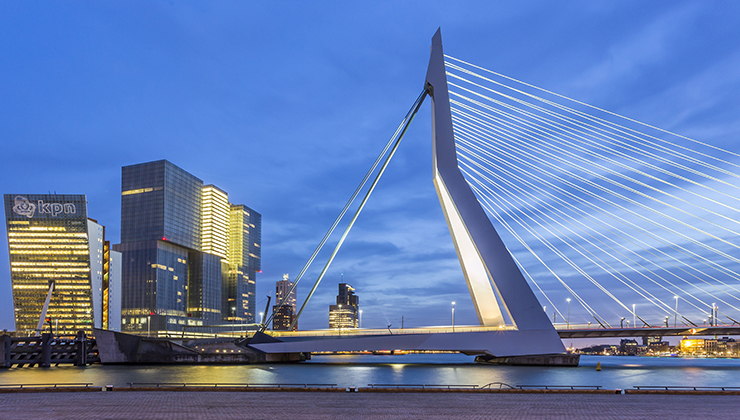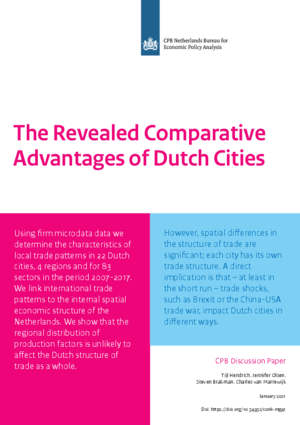The Revealed Comparative Advantages of Dutch Cities

Our findings are as follows. First, analysis of the lens condition indicates that the regional concentration of production factors (lumpiness) does not affect the Dutch national trade pattern. Second, despite the fact that the lens condition is verified, comparative advantage patterns across locations differ significantly from each other. Third, the differences across locations of comparative advantage patterns is explained by the interaction of local skill-abundance and sector skill-intensity, in line with the predictions of the factor abundance model.
Downloads
Moreover, at the sectoral level, location-specific variables such as market access or density, have limited effects. Fourth, most locations that house sectors that have a strong comparative (dis-) advantage relative to the Netherlands also have a strong comparative (dis-) advantage relative to the world. The results indicate that international trade policies and disputes, such as Brexit or the US-China trade war, can have strong local consequences.
Authors


